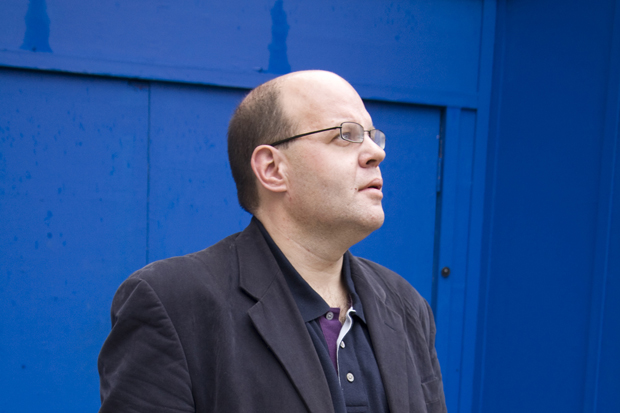Architecture is sometimes described as the second oldest profession, but often — in both theory and practice — it competes with the first. In his splendiferous office in Manhattan’s Seagram Building, Philip Johnson confirmed this when he told me, ‘Remember, son, I’m a whore.’ True to his vocation, this was a line he had often indiscriminately used.
Architects need to have big personalities because their responsibilities are so huge. Frank Lloyd Wright said that surgeons can bury their mistakes, but architects have to live with them. And so do the rest of us. Few of us have ever met a reticent, self-deprecating architect.
In the middle of the last century the Institute of Personality Assessment at the University of California performed psychometric tests on leading architects, now the subject of Pierluigi Serraino’s interesting new book The Creative Architect. But really all you have to know about the architectural personality disorder is that Wright was the inspiration for the megalomaniac Howard Roark in Ayn Rand’s The Fountainhead.
The title Architecture’s Odd Couple is inspired by Neil Simon’s 1965 Broadway play with two divergent characters: a Mr Tidy Paws who is forced to cohabit with a male slut. Between Johnson and Wright there were also marked contrasts. Johnson, the younger man, was rich, gay, Harvard, metropolitan, squeaky-clean, sleek and not much fussed by principles of any sort. In Germany before the war he had camply noted that the Wehrmacht’s ‘green uniforms make the place look gay and happy’. His schmoozing the Nazis led to a cameo role in CBS reporter William L. Shirer’s Berlin Diary (1941) which became notorious. Johnson later apologised, but one suspects he rather enjoyed the notoriety, if not the reason for it.
Frank Lloyd Wright was built from different materials. He was a draftsman, Druidical Welsh, eccentric, grubby, a fabulist and theoriser, who possessed a satyric heterosexual libido and, rather despising New York, was given to living in wide open spaces under capacious and sheltering roofs surrounded by adoring and tranquilised acolytes (including, at one point, Svetlana Stalin). He wore a cape and impressive hats. Hugh Howard also paints him as an improvident cadger, scrounger and procrastinator. The other difference between Johnson and Wright is that the former was a fly opportunist and copyist while the latter was a world-class designer of completely original genius.
Between them, this odd couple created four buildings which are a perfect synopsis of 20th-century American architecture. Wright gave us Fallingwater, one of the most astonishing houses ever built; and in New York’s Guggenheim, one of the most astonishing museums ever built. Wright’s houses always leaked, had wonky electrics and suffered from the contractor’s inability to soar as high as the architect’s imagination. Still, damp patches and short circuits are a small price to pay for ineffable beauty: Fallingwater caused Time to anoint Wright as ‘the greatest architect of the 20th century’. Equally, the Guggenheim was wholly unsuited to its purpose as an art gallery, but is surely on everybody’s list of the top ten greatest buildings of all time.
Of Johnson’s architecture there is less to be said, because, just as his eyewear was inspired by Le Corbusier, so his buildings were inspired by his mentor, the former Bauhaus director Ludwig Mies van der Rohe. Johnson’s Glass House at New Canaan in Connecticut was a take on Mies’s Farnsworth House at Plano, Illinois. And the Seagram Building on Park Avenue, the ultimate modernist corporate HQ where the Golden Section served bourbon sales, was a conception of Mies’s executed by Johnson. True, Johnson fitted out the lovely Four Seasons Restaurant, but that was just de luxe styling. At the ‘whore’ conversation, Johnson also explained that he liked Mies because ‘he was easy to copy’.
Although Howard’s book is meticulously footnoted, it is not altogether well-founded as a conceit. Johnson and Wright really did not have a lot to do with each other: after an early coming together at a Museum of Modern Art exhibition which Johnson organised in 1932, their encounters were only intermittent. Johnson visited the Wright campus at Taliesin (helpfully glossed as ‘talley-ess-in’) and there were other reciprocal visits, but Wright was too dottily aloof and Johnson too bitchily ambitious for them to be much concerned with each other, although the homophobic Wright held a long-term grudge about Johnson’s catty description of him as the last architect of the 19th century.
So it’s the sort of book that tends, New Yorker-style, towards accounts that pretend, inoffensively, to be eyewitness: Philip-caught-his-breath-as-Frank-hit-the-bathroom-door-with-his-cane sort of thing. It’s a book where ‘sparks fly’ and Johnson has ‘reluctant ears’. Backward run sentences until reels the mind. Lacking any substantial Johnson-Wright narrative, there are long (and not un-interesting) accounts of Mies’s Tugendhat House, Manhattan art madame Hilla Rebay, Alfred Barr and the early history of MoMA.
Architecture’s Odd Couple satisfies an American need for gigantic personalities in adversarial postures: Muhammad Ali/Sonny Liston, Gore Vidal/William F. Buckley, Tom Wolfe/Hunter S. Thompson. But Johnson and Wright were on a different level: whore versus Earth Mother. In this account, the whore wins. There have been better books about Frank Lloyd Wright, but never a better account of Philip Johnson.
The post The original and the copyist appeared first on The Spectator.
Got something to add? Join the discussion and comment below.
Get 10 issues for just $10
Subscribe to The Spectator Australia today for the next 10 magazine issues, plus full online access, for just $10.
You might disagree with half of it, but you’ll enjoy reading all of it. Try your first month for free, then just $2 a week for the remainder of your first year.














Comments
Don't miss out
Join the conversation with other Spectator Australia readers. Subscribe to leave a comment.
SUBSCRIBEAlready a subscriber? Log in